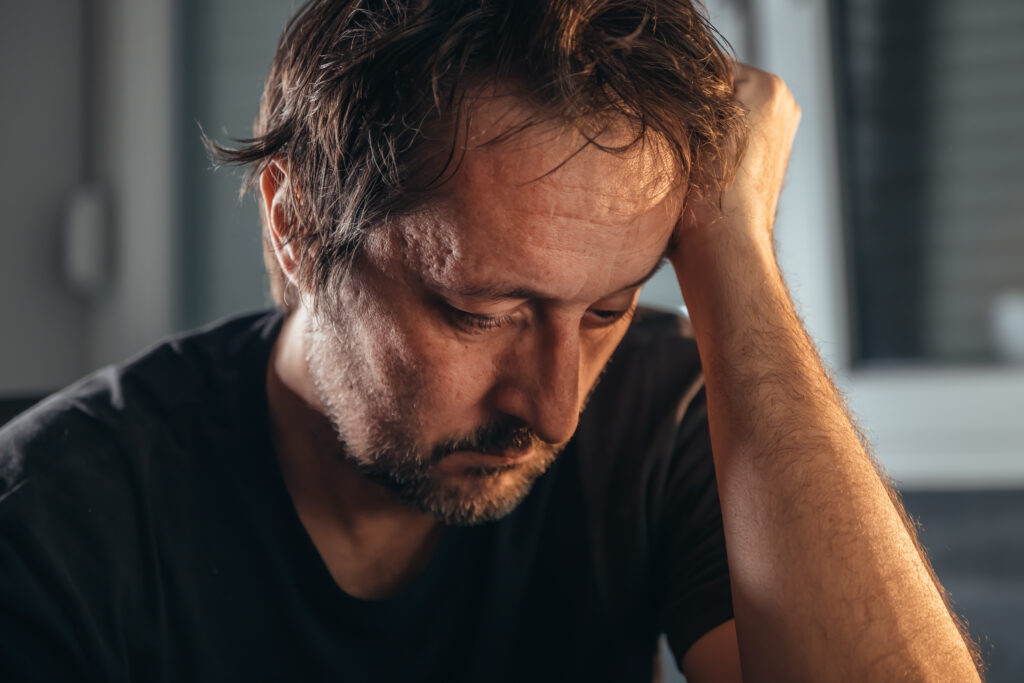OxyContin is a powerful opioid medication that is often prescribed to help manage pain. While it can be helpful when used correctly under a doctor’s care, it can also lead to dependence. Professional treatment can be essential when someone is experiencing addiction to OxyContin. When someone stops taking OxyContin after using it for a long time, their body will go through withdrawal, which can cause uncomfortable symptoms that may last for days or weeks. Someone experiencing withdrawal may also experience cravings. This is why OxyContin use can lead to opioid use disorder (OUD), even when it’s initially prescribed by a healthcare provider.
If you or someone you know is taking OxyContin, understanding the signs of withdrawal is important. Knowing these signs can help you know what to expect and when to seek help.
6 symptoms and signs of OxyContin withdrawal
- Intense cravings — One of the hardest parts of withdrawal is the strong urge to use opioids again. Your brain wants to feel “normal” again, so it signals cravings. While these cravings can be overwhelming, they do not last forever. They can also be managed with medications like Suboxone.
- Persistent pain — Muscle and joint pain is a common symptom of withdrawal. Your body may feel sore. Your muscles may ache and feel tense as they adjust to not having opioids. Some people describe it as feeling like they have the flu.
- Sweating and chills — Many people experience hot and cold flashes during withdrawal. One minute, they may feel sweaty and overheated. The next minute, they may be shivering and feel freezing. This happens because the body is struggling to regulate temperature. Fever may cause you to feel cold when your body is actually very hot.
- Mental health challenges — Withdrawal can take a major toll on your mental health. Experts recommend checking for depression and other mental health challenges during the detox process, as this can allow for targeted mental health support. Treating mental health challenges may help reduce an individual’s risk of using again.
- Digestive issues — The digestive system is strongly affected by opioids. When a person stops taking OxyContin, they may feel sick to their stomach. Some people experience nausea, vomiting, and diarrhea, which can lead to dehydration. Drinking plenty of water and eating small meals can help during withdrawal.
- High heart rate and blood pressure — OxyContin slows down your heart rate and breathing. When the drug leaves your body, your heart may beat faster than normal. Your blood pressure may rise. This might make you feel jittery or lightheaded.z
How long do OxyContin withdrawal symptoms last?
Withdrawal does not happen all at once. It develops in stages:
-
- First 24 hours — Symptoms sometimes start around 12 to 14 hours after the last dose. The person may feel like a bad case of the flu.
- Days 2-4 — Symptoms often peak during the first few days. People may feel restless, have muscle pain, and struggle with cravings.
- Days 5-7 — The worst symptoms may start to improve. However, some discomfort will likely continue.
- Weeks 2-4 — Some people feel lingering effects, such as trouble sleeping and low energy.
Everyone’s experience is different. Some people feel better in a week, while others may have mild symptoms for longer. Various factors can affect your withdrawal timeline, including your dosage and how long you’ve been taking OxyContin. A treatment provider can help you get a better understanding of your personal timeline.
How to manage OxyContin withdrawal
Going through withdrawal alone can be very difficult. Fortunately, you don’t have to navigate this time by yourself. There are safe and effective ways to manage symptoms:
- Medication for opioid use disorder (MOUD) — Medications like Suboxone can help reduce withdrawal symptoms and cravings. They make it easier to stay in recovery.
- Support from others — Having friends, family, or a support group can make withdrawal easier. Talking to someone who understands can help a lot.
- Professional treatment — Many treatment programs offer medical supervision and support for withdrawal. They can provide care in case your symptoms get too intense.
Groups can help you manage your withdrawal symptoms
At Groups, we’re committed to helping people work through withdrawal symptoms and cravings. Getting through withdrawal is a key phase in recovery. We use Suboxone, the gold-standard treatment for OUD, to keep symptoms and cravings under control. We also offer weekly group support meetings and life-goal assistance customized to your personal goals. You can contact us to get more information about how we treat withdrawal symptoms.
Give our Recovery Support Specialists a call today when you’re ready to begin your recovery. We provide treatment across the country—and we’re always expanding. See if we offer care in your state, either online or at one of our 130+ local offices. If Groups does not offer treatment in your area, you can locate other treatment options here.




